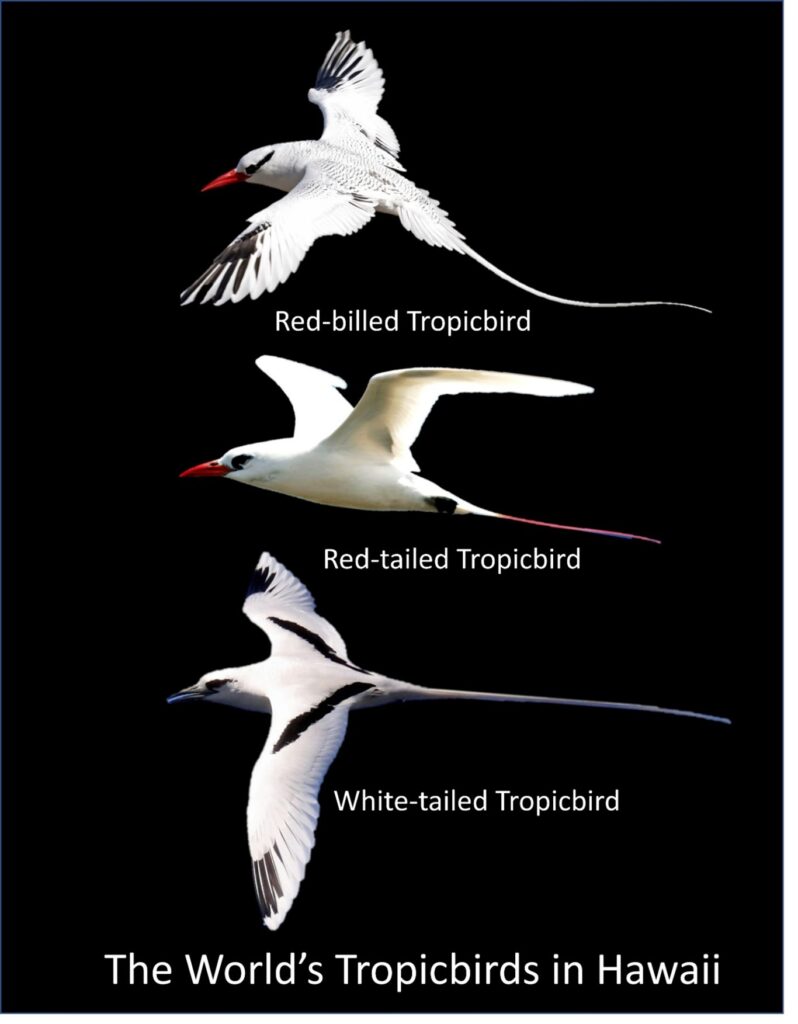
Dancing in the sky: Hawaiʻi’s Tropicbirds
/ Uncategorized / By
Susan Scott
10 things we want to share about Hawaiʻi's Tropicbirds
- Tropicbirds live worldwide in the tropics and subtropics. Because these seabirds’ shrill calls reminded sailors of the bosun officer’s whistle, tropicbirds are sometimes called bosun birds.
- Three tropicbird species exist: 1) Red-tailed Tropicbird (koaʻe ʻula), and 2) White-tailed Tropicbird (koaʻe kea), and 3) Red-billed Tropicbird.
- Only the first two raise young in Hawaiʻi. Red-billed Tropicbirds occasionally visit Hawaiʻi but do not breed here.
- Tropicbirds’ two streaming tailfeathers are only for show. Called ornamentals, the long narrow feathers are part of the birds’ courtship rituals.
- Koaʻe ʻula perform dramatic aerial mating displaysin which two or more birds fly upright and backwards, then forward and downward, circling one another while twitching their tails side to side and squawking.
- Koaʻe kea often nest in holes in inaccessible cliffs, but koaʻe ʻula nest on the groundunder bushes and in rock crevices. This makes them vulnerable to cats, rats, and mongooses.
- Hālona Blowholeand Lanai Lookout are good places on Oʻahu to see tropicbirds, sometimes all three species, in flight.
- Koaʻe ʻula are common off Kauaʻi’s Kīlauea Point National Wildlife Refugeas well as Hawaiʻi’s other coastlines.
- Koaʻe kea can be spottedsoaring along the steep cliffs and deep valleys of the Main Hawaiian Islands.
- Tropicbirds are elegant fliers but awkward walkers. At sea, tropicbirds sometimes rest on the water, floating with their tails straight up.

